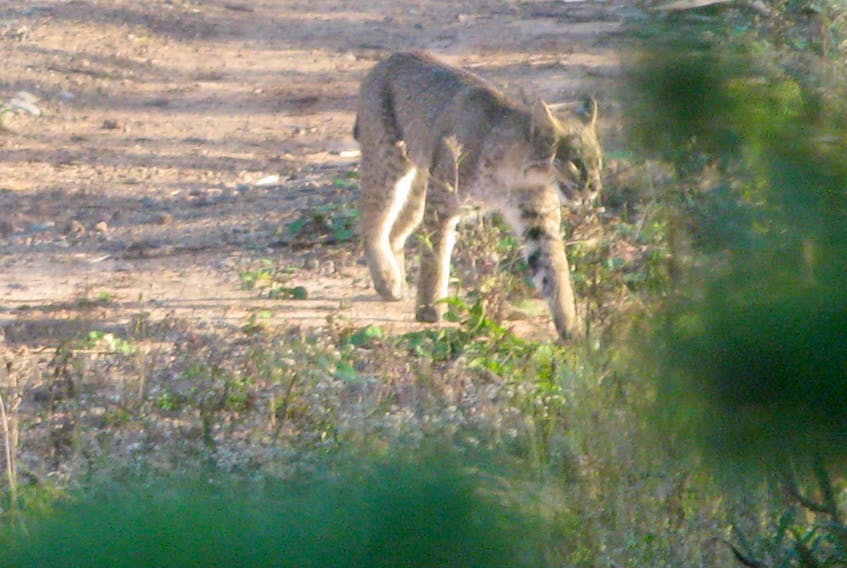TRURO, N.S. – Some Canada lynx do exist on Mainland Nova Scotia but a wildlife biologist does not believe that is the case with the recent sighting of a big cat by a Truro man.
“My opinion is it’s a bobcat,” said Mike Boudreau, a human wildlife conflict biologist with the Department of Natural Resources in Kentville, regarding a picture featured this week in the Truro Daily News.
“The ear tufts aren’t big enough on the picture I saw. Lynx have a lot longer ear tufts. The white forelegs and black spotting on the legs is more indicative of a bobcat,” he said.
As well, Boudreau said the hair on a lynx tends to be much silkier and greyer.
Truro resident Glen Kaye snapped a picture of a big wildcat while hunting recently in the Brentwood area. Because of the tufts on the ears and other markings and after showing a picture to a staff member at the local DNR office he believed he had seen a lynx.
But Boudreau, who has been working in the fur section at DNR for 28 years – seven as a biologist – respectfully disagreed.
“I process thousands of bobcats in the lab. The ear tufts (on a lynx) would be very prominent. You would notice that. And the back end on a lynx would be a lot higher,” he said.
“They’re kind of odd looking when they are walking actually. Their back end is up quite a bit compared to that of a bobcat. The feet are a lot bigger too.”
While Canada lynx are typically found in the Cape Breton highlands, Boudreau said they sometimes migrate to the mainland when food sources such as rabbit are scarce.
“We could also see some come across from New Brunswick, although that’s never really been documented,” he said. “They can travel large distances.”
Related: Truro man captures picture of big cat
http://www.trurodaily.com/news/local/truro-man-captures-picture-of-big-cat-159624/









